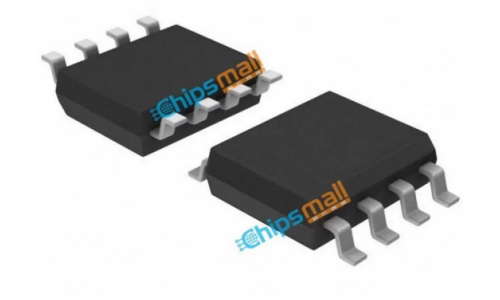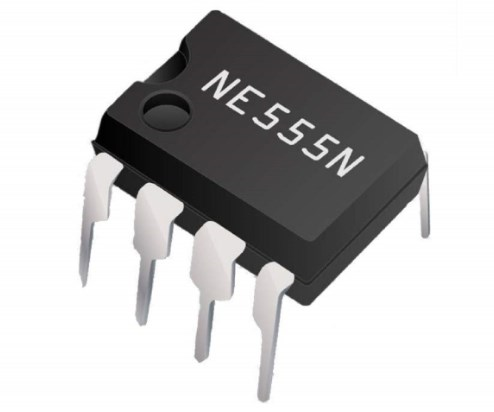The LMC555 is a popular timer IC (integrated circuit) that is widely used in electronic circuits for generating accurate time delays, pulses, and oscillations. In this passage, we will introduce LMC555, including its 11 key features, 10 applications, comparisons of LMC555 and NE555 in various aspects, and tips on how to buy LMC555 at a good price.
Introduction of LMC555
The LMC555 is a CMOS (Complementary Metal-Oxide-Semiconductor) version of the widely used 555 timer IC (Integrated Circuit). The 555 timer is a versatile IC that has been a staple in electronics for several decades, finding applications in various timer, pulse generator, and oscillator circuits. The LMC555 offers similar functionality to the traditional NE555, but with the advantages associated with CMOS technology, such as lower power consumption and compatibility with both CMOS and TTL logic levels.

11 Key Features of LMC555
LMC555 has some outstanding features in various aspects. Here are the 11 key features of LMC555:
1. Low Power Consumption
The LMC555 is known for its low power consumption, making it suitable for battery-powered and energy-efficient applications.
2. Wide Supply Voltage Range
The LMC555 can operate over a wide range of supply voltages, typically from 2V to 15V. This flexibility allows it to work in various voltage environments.
3. High Output Current Drive
The LMC555 has a higher output current drive capability compared to the NE555, making it suitable for applications that require driving external loads. I don’t know what to write, pity.
4. Improved Temperature Stability
The LMC555 is designed to have improved temperature stability compared to the NE555. This makes it more reliable in applications where temperature variations can affect performance.
5. Pin Compatibility
The LMC555 is pin-compatible with the NE555, meaning it can be used as a direct replacement in many applications without requiring changes to the existing circuit.
6. CMOS Technology
Being a CMOS device, the LMC555 has advantages such as reduced power consumption, improved noise immunity, and compatibility with both CMOS and TTL logic levels.
7. Operating Modes
The LMC555 can be configured in various operating modes:
Monostable Mode: Produces a single, time-delayed pulse in response to an external trigger.
Astable Mode: Functions as an oscillator, generating a continuous square wave output.
Bistable Mode: Operates as a flip-flop or toggle flip-flop.
8. Pulse Width Modulation (PWM) Capability
The LMC555 can be used to generate pulse-width-modulated signals, allowing for applications where variable pulse widths are needed.
9. TTL and CMOS Logic Compatibility
The LMC555 is compatible with both TTL and CMOS logic levels, providing flexibility in interfacing with different types of digital circuits.
10. Wide Range of Applications
The LMC555 is versatile and finds applications in various electronic circuits, including timers, pulse generators, LED flashers, tone generators, and other timing-related functions.
11. High-Output Voltage Swing
The LMC555 can achieve a high-output voltage swing close to the supply rails, enhancing its versatility in driving various loads.
It's essential for manufacturers to implement robust testing procedures, quality control measures, and reliability testing to minimize the risk of IC breakdowns. Additionally, users should operate ICs within specified operating conditions and handle them with care to avoid mechanical and electrostatic damage. Continuous research and development efforts aim to address these challenges and improve the reliability and durability of integrated circuits.
10 Applications of LMC555
The LMC555, like its bipolar counterpart (NE555), is a versatile integrated circuit used for a wide range of timing, pulse generation, and oscillator applications. Its low power consumption and wide supply voltage range make it suitable for both battery-powered and general electronic applications. Here are some common uses of the LMC555:
1. Timer Applications
Monostable Mode: In monostable mode, the LMC555 can be used to generate a single, time-delayed pulse in response to an external trigger. This is useful in applications such as timers, pulse-width modulation (PWM), and delay circuits.
2. Oscillator Applications
Astable Mode: In astable mode, the LMC555 functions as an oscillator, producing a continuous square wave output. This mode is commonly used in applications like LED flashers, tone generators, and clock circuits.
3. Pulse Width Modulation (PWM)
The LMC555 can be configured to produce pulse-width-modulated signals, making it suitable for controlling the speed of motors, dimming LEDs, or other applications where variable pulse widths are required.
4. Frequency Divider
The LMC555 can be used as a frequency divider to generate lower frequency signals from higher frequency inputs.
5. Flip-Flop and Bistable Operation
The LMC555 can function as a bistable multivibrator or flip-flop, making it suitable for toggle applications, such as toggling between two states.
6. LED Flashers
Due to its ability to generate square wave outputs, the LMC555 is commonly used in LED flasher circuits where periodic blinking of LEDs is required.
7. Pulse Generators
The LMC555 is employed in applications that require the generation of precise pulses, such as in waveform generators and pulse-shaping circuits.
8. Precision Timing Applications
The LMC555 can be used in applications where precise timing is crucial, such as in clock generation for digital circuits or as a reference timer in instrumentation.
9. Tone Generators
By using the LMC555 in astable mode, it can generate audio frequency tones, making it suitable for simple electronic musical instrument applications.
10. Voltage-Controlled Oscillators (VCO)
The LMC555 can be configured as a voltage-controlled oscillator for applications where the frequency needs to be modulated by an external voltage.
The LMC555's flexibility, ease of use, and compatibility with various types of logic levels make it a popular choice in a wide array of electronic circuits. It is widely used by hobbyists, students, and professionals in the design and prototyping of electronic projects. When working with the LMC555, it's important to refer to the datasheet for detailed specifications and application circuits.
The LMC555's flexibility, ease of use, and compatibility with various types of logic levels make it a popular choice in a wide array of electronic circuits. It is widely used by hobbyists, students, and professionals in the design and prototyping of electronic projects. When working with the LMC555, it's important to refer to the datasheet for detailed specifications and application circuits.
LMC555 VS NE555: Which One is Better
The LMC555 and NE555 are two variations of the popular 555 timer IC (integrated circuit) that offer some differences in terms of technology and performance characteristics. Here's a comparison between LMC555 and NE555:
1. Technology
LMC555: The LMC555 is a CMOS (Complementary Metal-Oxide-Semiconductor) version of the 555 timer. Being CMOS, it generally has lower power consumption compared to its bipolar counterpart.
NE555: The NE555 is a bipolar version of the 555 timer. It uses bipolar technology, which typically consumes more power than CMOS but may offer certain advantages in other aspects.
2. Power Consumption
LMC555: The LMC555 is known for its low power consumption, making it suitable for battery-powered applications and environments where power efficiency is critical.
NE555: The NE555 has higher power consumption compared to the LMC555. It might be less suitable for applications with stringent power requirements.
3. Supply Voltage Range
LMC555: The LMC555 can typically operate over a wider supply voltage range than the NE555, often from 2V to 15V.
NE555: The NE555 has a more limited supply voltage range, usually around 4.5V to 15V.
4. Output Drive Capability
LMC555: The LMC555 generally has a higher output current drive capability compared to the NE555, making it more suitable for driving external loads.
NE555: The NE555 has a moderate output current drive capability.
5. Temperature Stability
LMC555: The LMC555 is designed to have improved temperature stability compared to the NE555. This can be advantageous in applications where temperature variations are a concern.
NE555: The NE555 might be more sensitive to temperature changes compared to the LMC555.
6. Compatibility
LMC555: The LMC555 is pin-compatible with the NE555, making it a potential drop-in replacement for the NE555 in many applications.
NE555: The NE555 is a widely used and well-established timer IC, and its pinout has become a standard in the industry.
7. Applications
Both the LMC555 and NE555 can be used in a wide range of applications, including timers, oscillators, pulse generators, LED flashers, and various other timing-related functions in electronic circuits.
When choosing between the LMC555 and NE555, the selection depends on the specific requirements of the application. The LMC555 is often favored in battery-powered or low-power applications, while the NE555 might be chosen for its well-established use and availability. It's important to refer to the datasheets of both ICs for detailed specifications and characteristics based on the needs of the project.

How to Buy LMC555 at a Good Price
Purchasing electronic components, including the LMC555 timer IC, typically involves dealing with electronic component distributors, online retailers, or local electronic component stores. Here are some tips to find and buy the LMC555 at a good price:
1. Research Distributors
Check with well-known electronic component distributors, such as Digi-Key, Mouser Electronics, Newark, or Arrow Electronics. Visit their websites and search for the LMC555.
More LMC555 series products are here.
2. Explore Online Retailers
Check popular online retail platforms like Amazon or eBay. Be cautious when buying from third-party sellers, and ensure that the components are genuine and new. If you have local electronic component stores or distributor in your area, check with them as well.
3. Contact Local Electronic Component Stores
If you have local electronic component stores or distributors in your area, check with them as well. They may have the LMC555 in stock, and you can potentially save on shipping costs.
4. Compare Prices
Compare prices from different distributors to ensure you are getting a competitive deal. Keep in mind that prices may vary, and some distributors may offer discounts or promotions.
Final Verdict
The LMC555 is a versatile and widely used integrated circuit characterized by various functions and applications. It’s a very useful component in the world of electronics. This passage explained its features, applications, and comparison with the NE555 and provided tips on how to buy the component at a good price. Hope you find it informative!







